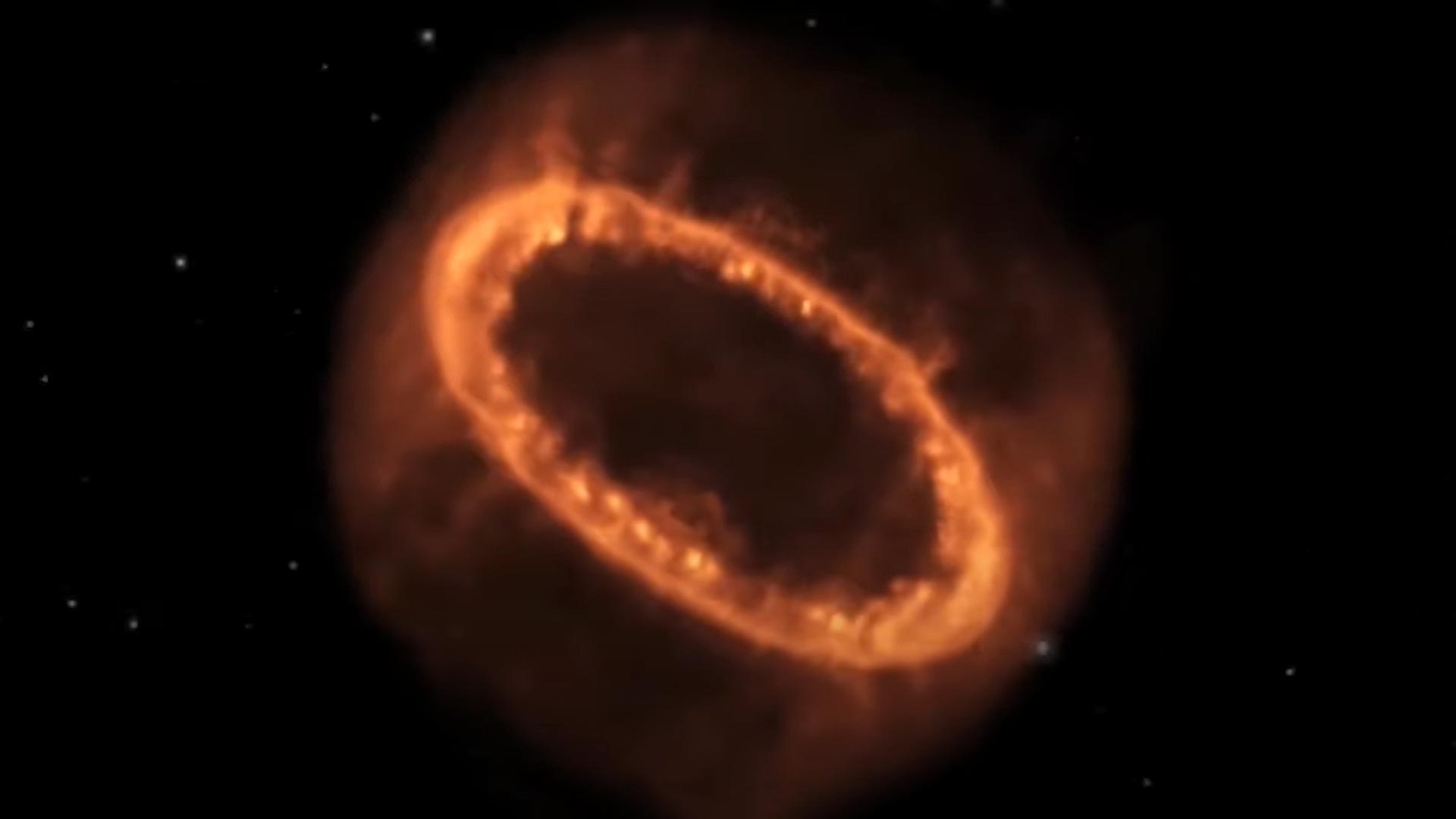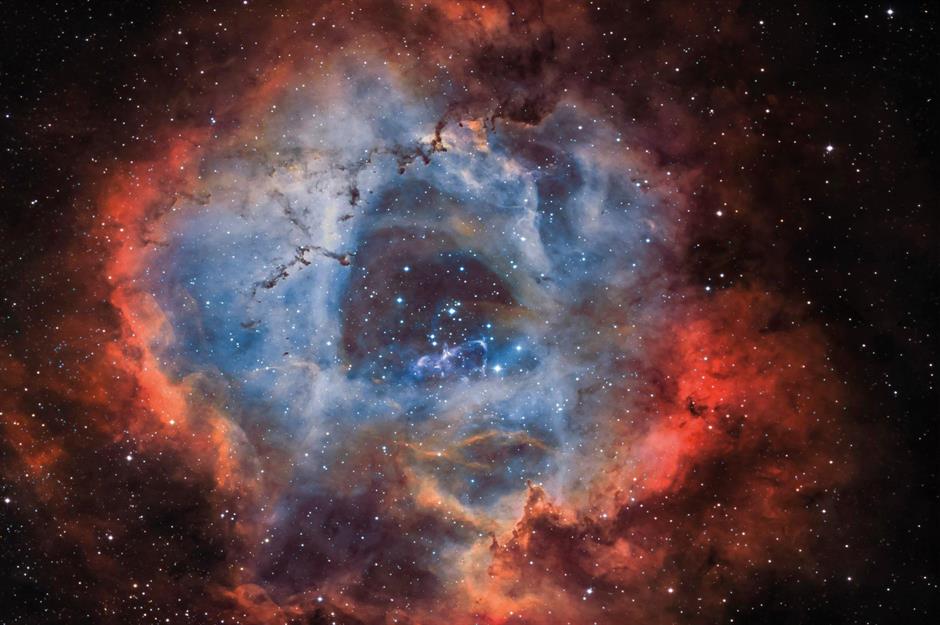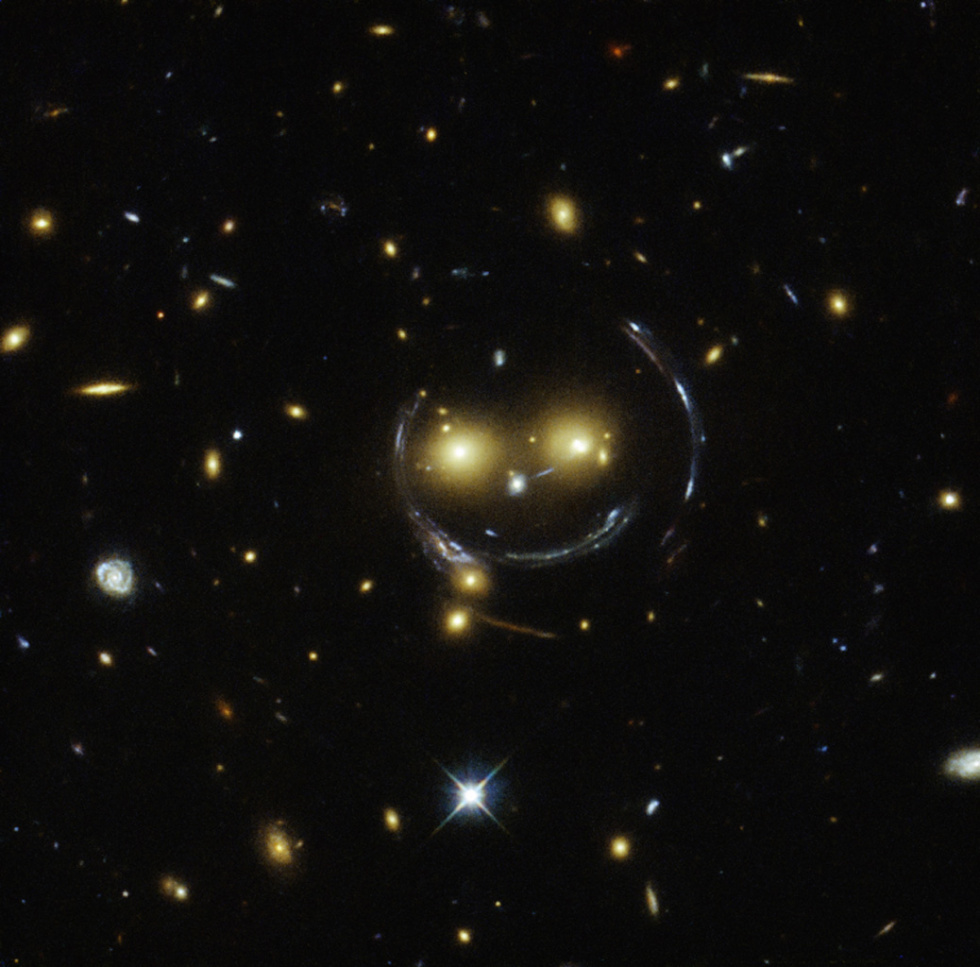If humanity has learnt anything from the sci-fi genre, it’s that the discovery of giant rings hanging in the depths of space rarely bodes well for us. Well, good news friends, because an astronomer from the University of Central Lancashire has just discovered an ancient, problematic ring-like structure of their very own hanging in deep space, the very existence of which is challenging our understanding of the universe in which we live.

Thankfully, the imaginatively named ‘Big Ring’ is no super weapon or portal to some far flung region of space. Instead, it appears to be an enormous collection of galaxies that have inexplicably coalesced to form a vast circle when viewed from the perspective of Earth. It’s worth noting that we are seeing The Big Ring as it was when the light left its myriad galaxies, at a time when the universe was just half its current age.

The ancient structure boasts a circumference of around four billion light years, making it one of the largest cosmic structures ever discovered. To add a little context, the distance between the Milky Way and its closest neighbour, the Andromeda galaxy, is a mere 2.5 million light years. The Big Ring is so large that according to one current theory known as the Cosmological Principle, it should never have been able to form.

“The Cosmological Principle assumes that the part of the universe we can see is viewed as a ‘fair sample’ of what we expect the rest of the universe to be like,” said Alexia Lopez, the PhD student at the University of Central Lancashire who discovered the Big Ring in data from the Sloan Digital Sky Survey. “We expect matter to be evenly distributed everywhere in space when we view the universe on a large scale, so there should be no noticeable irregularities above a certain size.”

According to the Cosmological Principle, no large scale structures should exceed 1.2 billion light years in size. However, the Big Ring, along with a handful of other gigantic cosmic structures such as the Sloan Great Wall, and a vast collection of galaxies called The Giant Arc, which was discovered by Lopez in 2023 close to the Big Ring, exceeded that limit.

Despite the name granted by its appearance, the Big Ring is likely not a ring at all, but rather a cork screwing structure of galaxies orientated face on to our blue planet. There is currently no obvious answer as to how these monstrous formations came to coalesce,
“One possibility is that the Big Ring could be related to Baryonic Acoustic Oscillations (BAOs),” said Lopez. “BAOs arise from oscillations in the early universe and today should appear, statistically at least, as spherical shells in the arrangement of galaxies. However, detailed analysis of the Big Ring revealed it is not really compatible with the BAO explanation: the Big Ring is too large and is not spherical.”

It is also possible that the corkscrew feature may have been manifested by the passage of a Cosmic String – a hypothetical form of dense high energy filament anomaly that formed in the wake of the Big Bang – through the region. In short, their existence stands as a stark reminder that our understanding of the cosmos is still in its infancy.
“Neither of these two ultra-large structures is easy to explain in our current understanding of the universe,” said Lopez. “And their ultra-large sizes, distinctive shapes, and cosmological proximity must surely be telling us something important – but what exactly?”
